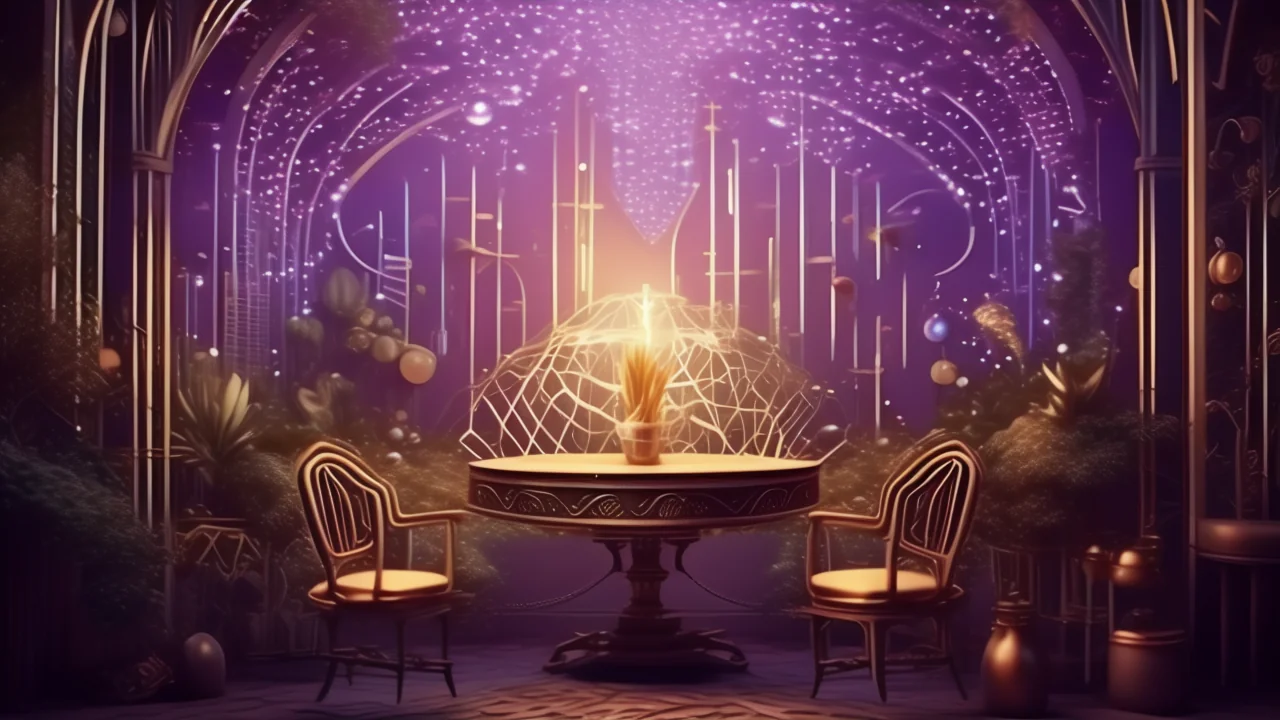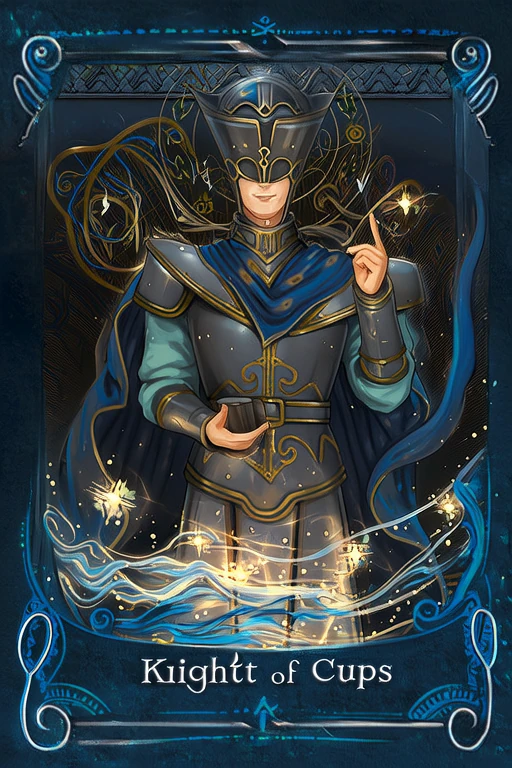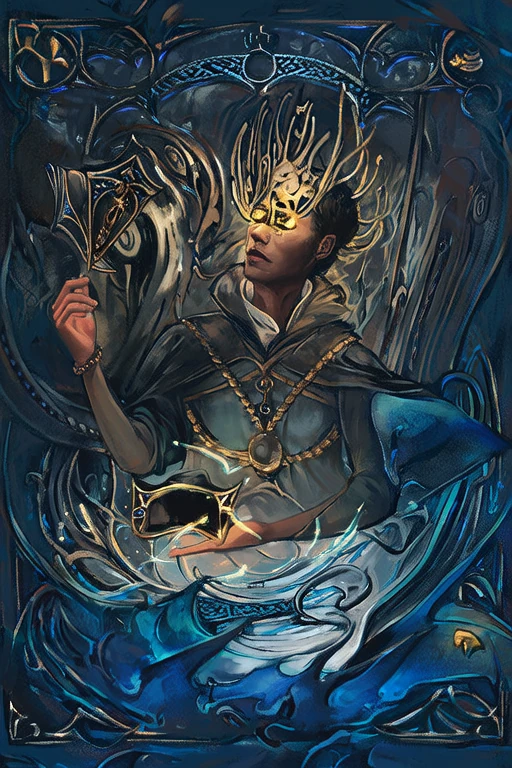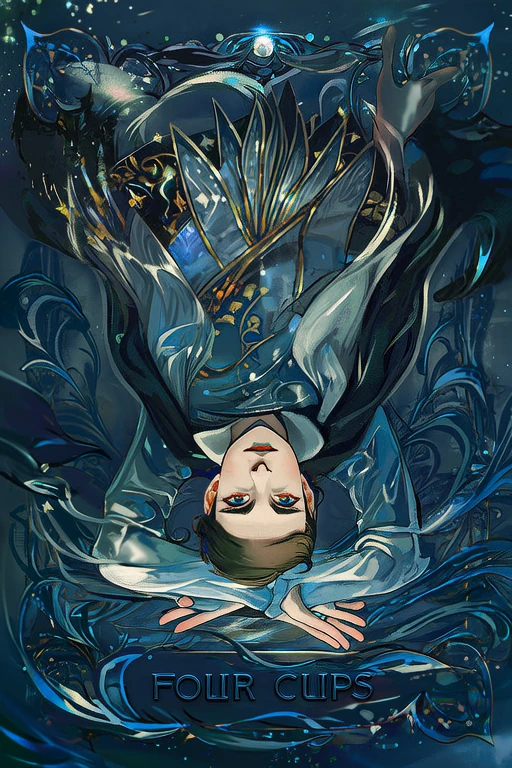
Knight of Cups
Discover the deep meaning of Knight of Cups with our free AI-powered tarot interpretation. Get instant, accurate readings based on advanced tarot knowledge.

Keywords
Upright Meaning
Creativity, romance, charm, imagination
Reversed Meaning
Self-expression, all talk and no action, unrealistic expectations
Full Interpretation
The Knight of Cups represents creativity, romance, and following your heart.
In-Depth Analysis
📜 Historical Background
The Knight of Cups, known in traditional tarot decks as the 'Cavalier of Cups' or 'Knight of Chalices,' holds a distinguished place in the Minor Arcana, representing the element of Water and the suit of Cups. Its origins trace back to early 15th-century Europe, where tarot cards were first used for games before evolving into tools for divination and esoteric study. The earliest known depiction of the Knight of Cups appears in the Visconti-Sforza tarot deck, a 15th-century Italian creation that laid the foundation for many modern tarot designs. In this deck, the knight is portrayed as a nobleman on horseback, often holding a chalice aloft, symbolizing emotional depth and spiritual offering.
As tarot spread across Europe, the imagery of the Knight of Cups evolved, influenced by regional artistic styles and mystical traditions. In the Rider-Waite-Smith (RWS) tarot, illustrated by Pamela Colman Smith under the guidance of A.E. Waite in the early 20th century, the Knight is depicted as a young man riding a white horse, holding a golden cup. His calm demeanor and flowing robes suggest sensitivity and emotional maturity. This version became the standard for many modern decks, though interpretations have varied widely—from romantic idealists to dreamers lost in their emotions.
The Knight of Cups has often been associated with mythological and literary figures, particularly those who embody the archetype of the romantic hero or spiritual seeker. Some scholars link the card to the Arthurian legends, drawing parallels between the knight and characters like Sir Galahad, the pure knight who successfully finds the Holy Grail. Others connect the card to the Greek god Hermes or the Roman Mercury, messengers of the divine who bridge the spiritual and material realms. These associations highlight the card's role as a guide or emissary of emotional or spiritual truth.
Across different cultures, the Knight of Cups has taken on varied meanings. In French cartomancy traditions, it often represents a charming, artistic young man, while in Italian interpretations, it may symbolize a messenger or someone bringing news. The card's cultural significance lies in its ability to reflect the emotional and romantic ideals of the society interpreting it, making it one of the more fluid and context-sensitive cards in the tarot deck.
Symbolism & Imagery
The Knight of Cups is rich in symbolic meaning, with each element of its imagery contributing to a deeper understanding of its essence. At its core, the card represents emotional maturity, idealism, and the pursuit of spiritual or romantic fulfillment. The knight himself is often depicted as youthful, noble, and serene, embodying the ideal of the emotionally intelligent man or woman who follows their heart with grace and intention.
The horse upon which the knight rides is typically white, symbolizing purity, spiritual awareness, and the untamed nature of emotion. In some decks, the horse may be shown mid-gallop, suggesting forward motion and the dynamic nature of emotional exploration. The knight holds a chalice or cup, a symbol of the soul, intuition, and the subconscious. This cup is often golden, signifying the value and preciousness of emotional truth.
Color symbolism is also significant. The knight’s armor may be silver or blue, representing the element of Water, emotional receptivity, and the moon’s influence. His flowing garments may be pink or red, indicating passion and the heart’s desires. The background landscape often features calm waters or a serene sea, reinforcing the card’s connection to emotional depth and spiritual reflection.
In terms of numerology, the number 11 is associated with the Knights in the tarot (as they are the 11th card in each suit), symbolizing intuition, spiritual insight, and the balance between the material and the ethereal. The Knight of Cups thus resonates with these qualities, serving as a reminder to trust one’s inner guidance and emotional wisdom.
Upright, the Knight of Cups signifies a person or message that brings emotional clarity, romantic opportunity, or spiritual inspiration. It encourages the seeker to follow their heart, listen to their intuition, and remain open to new emotional experiences. Reversed, the card may indicate emotional instability, unrequited love, or being overly swayed by illusions or fantasies. It warns against emotional manipulation or becoming lost in one’s own dreams without grounding.
The Knight of Cups also connects with other cards in the tarot. It complements the Two of Cups (emotional union), the Empress (nurturing and abundance), and the Moon (intuition and hidden truths). When appearing with more grounded cards like the Pentacles or the Emperor, it suggests a need to balance emotion with practicality.
Across cultures, the Knight of Cups may be interpreted differently—ranging from a charming messenger to a dreamer lost in fantasy—depending on the reader’s tradition and the querent’s context.
Psychological Insights
From a psychological perspective, the Knight of Cups embodies the archetype of the romantic idealist and the seeker of emotional truth. In Carl Jung’s framework of archetypes, the Knight can be seen as an expression of the Anima or Animus—the inner feminine or masculine aspect that seeks balance and wholeness. This card often emerges in readings when the querent is in a phase of emotional exploration, yearning for deeper connections, or seeking to understand their inner world.
The Knight of Cups encourages individuals to trust their intuition and emotional intelligence. In modern life, where rationality often dominates decision-making, this card serves as a reminder that emotions are a valid and essential source of wisdom. It may appear when someone is considering a romantic relationship, pursuing a creative endeavor, or needing to make a choice guided by the heart rather than logic alone.
In terms of personal growth, the Knight of Cups invites self-reflection and emotional maturity. It asks the individual to examine their motivations—are they being driven by genuine feelings or by illusions and wishful thinking? This card supports those on a spiritual path, encouraging them to follow their dreams while remaining grounded in reality.
Therapeutically, the Knight of Cups can be a valuable tool in counseling and self-discovery. It may appear in sessions where clients are exploring emotional blocks, relationship dynamics, or creative blocks. It helps individuals reconnect with their inner child, their artistic side, or their capacity for love and compassion.
In modern spiritual practices, the Knight of Cups is often associated with meditation, dream work, and energy healing. Its connection to the Water element and the Moon makes it a powerful ally for those working with emotional healing, psychic development, or intuitive practices. It reminds practitioners to listen to their inner voice and to approach life with empathy and openness.
Ultimately, the Knight of Cups offers a message of emotional courage and spiritual aspiration. It encourages the seeker to embrace their feelings, pursue their dreams, and trust in the journey of the heart, even when the path is uncertain.
Correspondences
The Knight of Cups is deeply connected to astrological and elemental forces, making it a rich card for esoteric study and energy work. Astrologically, it corresponds to the planet Neptune, the ruler of dreams, intuition, and spiritual longing. Neptune’s influence imbues the Knight with a sense of idealism, compassion, and artistic sensitivity. In some systems, the card is also linked to Pisces, the mutable water sign known for its deep emotional intelligence and spiritual attunement.
Elementally, the Knight of Cups belongs to the suit of Cups, which aligns with the element of Water. Water governs emotions, intuition, and the subconscious mind, reinforcing the card’s themes of emotional depth and spiritual exploration. The card resonates particularly well with the season of Autumn, a time of reflection and emotional harvest, and with the evening hours, when the veil between the conscious and unconscious is thinnest.
In crystal healing, stones that enhance emotional clarity and spiritual insight are associated with the Knight of Cups. These include Aquamarine for emotional balance, Rose Quartz for love and compassion, and Amethyst for spiritual awareness. Essential oils such as Lavender, Ylang Ylang, and Frankincense support emotional healing and meditation when working with this card’s energy.
Herbs linked to the Knight of Cups include Chamomile for calming the heart, Lavender for emotional soothing, and Mugwort for enhancing dreams and intuition. These can be used in teas, sachets, or incense to align with the card’s energy during rituals or tarot readings.
Chakra-wise, the Knight of Cups resonates with the Heart Chakra (Anahata) and the Third Eye Chakra (Ajna), promoting emotional openness and intuitive clarity. Balancing these energy centers can help the seeker connect more deeply with the card’s message of love, intuition, and spiritual guidance.
Numerologically, as the 11th card in the suit, the Knight of Cups carries the vibration of the number 11, a master number associated with spiritual insight, inspiration, and heightened sensitivity. This reinforces the card’s role as a guide on the emotional and spiritual journey.
❓ Frequently Asked Questions
The Knight of Cups is a card that often stirs curiosity and confusion, especially among beginners. One of the most common questions about this card is: 'Does the Knight of Cups always represent a person?' While it can symbolize a real individual—often a charming, emotionally intelligent man or woman—it can also represent a message, an invitation, or an inner state of emotional openness. The context of the reading and surrounding cards are key to determining its meaning.
Another frequent question is: 'What does the Knight of Cups mean in love readings?' In romantic contexts, the card often signifies a new emotional connection, a proposal, or a message from a potential partner. Upright, it suggests a romantic gesture or emotional depth. Reversed, it may indicate emotional indecision, unrequited love, or unrealistic expectations in a relationship.
Beginners often misinterpret the Knight of Cups as purely a romantic card, but its meaning extends to all matters of the heart—including creativity, spirituality, and emotional healing. It is not just about falling in love but about following one’s passion and intuition in any endeavor.
For professional readers, the Knight of Cups works well in spreads that explore emotional dynamics, such as the Celtic Cross, the Relationship Spread, or the Horseshoe Spread. When combined with other cards, its meaning shifts: paired with the Two of Cups, it indicates mutual attraction; with the Five of Cups, it may warn against clinging to past disappointments.
When interpreting the Knight of Cups in different contexts, consider the querent’s emotional state and the surrounding cards. In career readings, it might suggest a creative opportunity or a diplomatic approach. In health readings, it may highlight the need for emotional healing or therapy.
To work effectively with the Knight of Cups, readers are advised to cultivate their intuition and emotional awareness. Journaling, meditation, and dream work can enhance one’s connection to this card’s gentle, flowing energy. Whether appearing in a reading about love, art, or personal growth, the Knight of Cups invites the seeker to trust their heart and embrace the journey of emotional and spiritual discovery.



